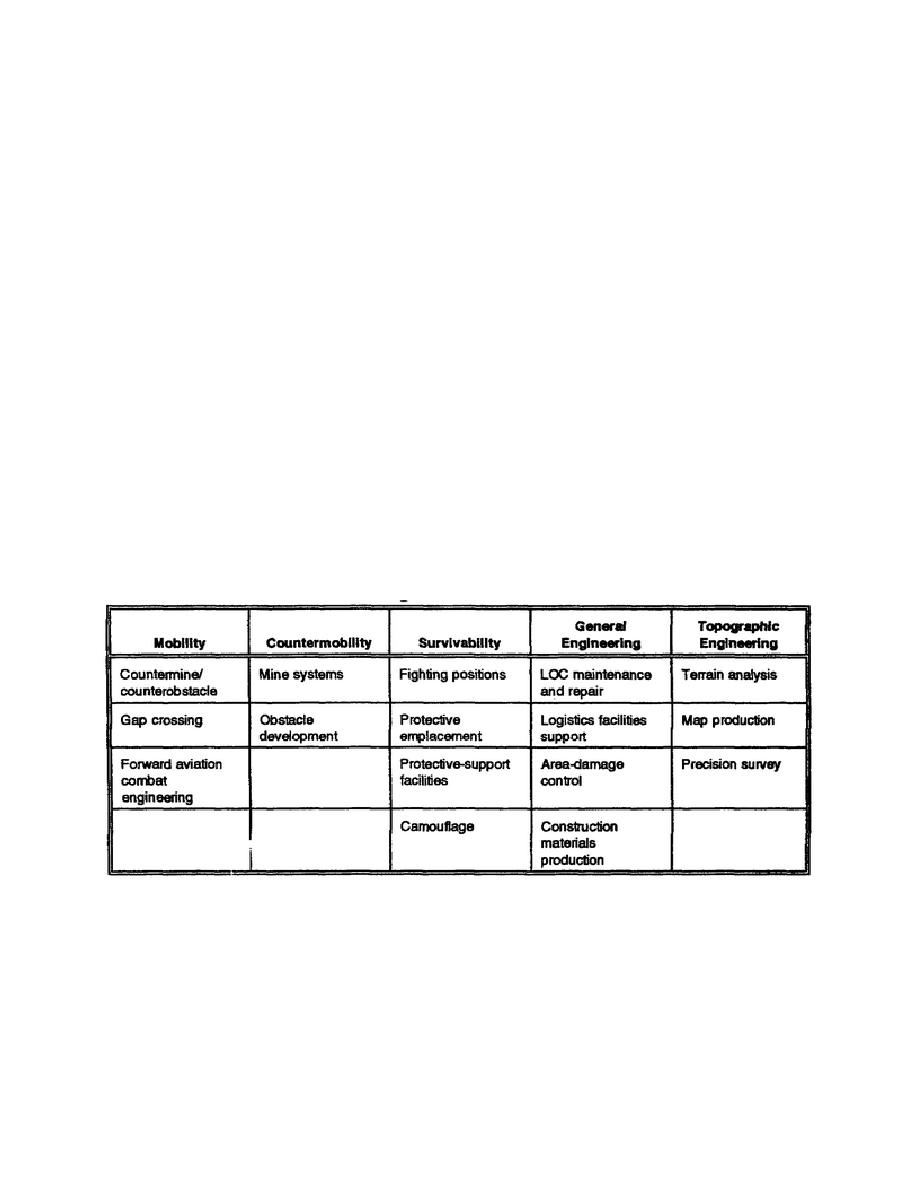
c. Integrate engineers with fire and maneuver. Fire and maneuver form
a triad with mobility and countermobility, because neither fire nor
maneuver is truly effective if the combat formation cannot move at
will and deny freedom of maneuver to the enemy.
(1) The scheme of maneuver governs the engineer plan.
Table 1-1
shows the five primary engineer functions integrated with the
scheme of maneuver.
Mobility enables the force commander to maneuver
tactical
units into positions of advantage over the enemy.
Countermobility augments natural terrain with obstacle systems
according to the commander's concept.
Survivability
provides
concealment
from
the
enemy
and
protective shelter from the effects of enemy weapons.
General
engineering
provides
a
deployed
force
with
construction
capability,
lines
of
communication
(LOC)
maintenance and repair, airfield damage repair, battle damage
restoration, and minefield clearing.
Topographic engineering provides commanders with information
about the terrain so they can use the ground effectively.
Table 1-1.
Engineer battlefield functions.
(2) Engineer forces are task-organized so quick transitions can be
made to subsequent phases.
Normal relationships between
engineers and maneuver unit ease the many required transitions.
The engineer force's ability to react quickly to changing
situations depends on its position before the battle. Normally,
there is insufficient time to radically restructure the engineer
organization for combat or to move engineers across the
battlefield after they join the battle. Placing
EN5483
1-4



 Previous Page
Previous Page
